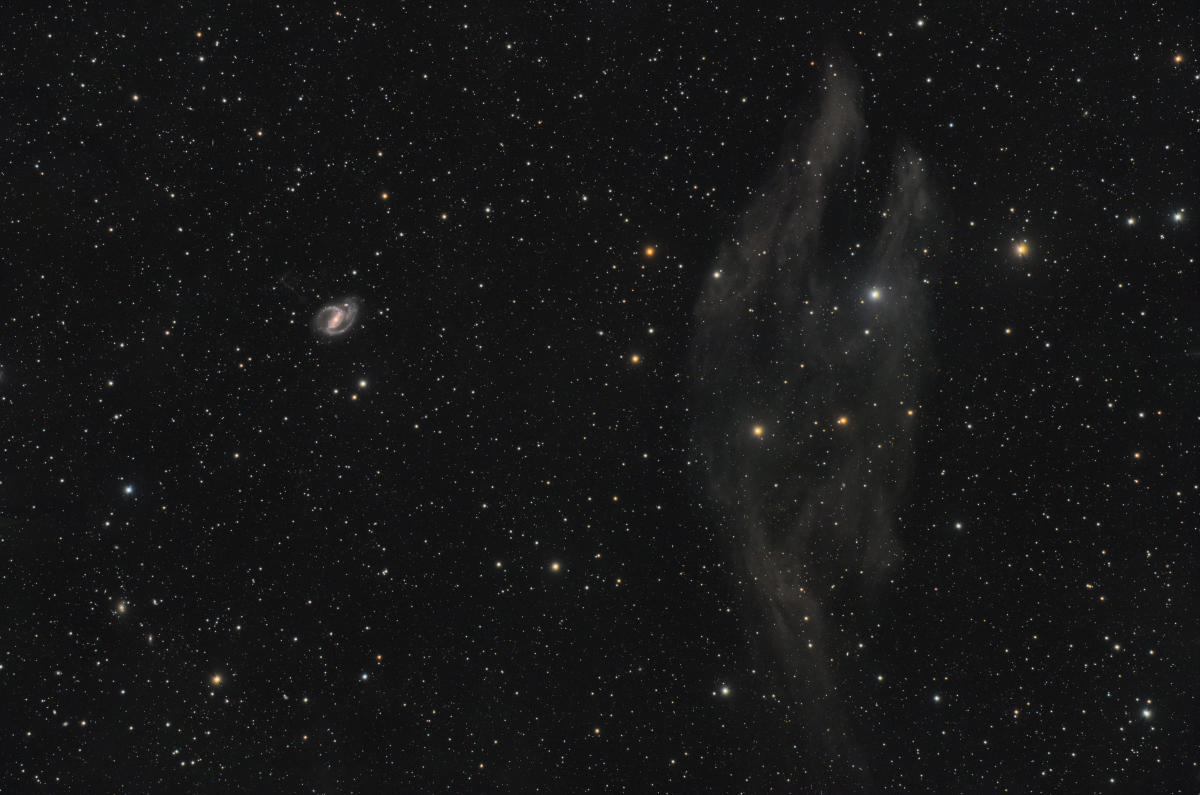
[back] NGC 1097 with Galactic Cirrus in Fornax [NED]
Higher resolved image /
höher aufgelöstes Bild (9472 x 6272 pixel)

|
(c) 2024 All astro photo images are copyrighted. They may not be used or reproduced without explicit written permission from the authors. |
|
0.5° |
|
About this Image / Über dieses Bild
| Camera: | Moravian C3-PRO-61000 Mono CMOS |
| Image Type, Orientation: | L-RGB-Ha Color Composite, North is at 12:00 |
| Exposure time: | L: 74x300s, R: 22x300s, G,B: 20x300s, Ha: 28x300s (13:40h total) |
| Exposure date: | October 22...24., 2023 |
| Location: | Capella Observatory South at Kiripotib Astro Farm, Namibia |
| Filter: | Astronomik Deep-Sky Deep-Sky RGB Filter set and 6nm Ha filter on Moravian EFW-3L-9-II External Filter Wheel |
| Instrument: | "Callisto", a Takahashi FSQ 106N, 530mm focal length, 106mm aperture, f/5 on modified Losmandy G11 (high res encoders with OnStepX) |
| Photographer: | Rainer Raupach, Frank Sackenheim, Josef Pöpsel |
| Remarks: |
This is a widefield image of the galaxy NGC1097 and its
surroundings. We have already photographed the galaxy in detail with the 24"
telescope, the image can be found here.
On closer inspection, you can see the "dog legs" of NGC1097. These are tidal
tails. The rather symmetrical appearance of these legs is unusual. Not far from the galaxy is a very large dark nebula. It consists of dust and gas from our own home galaxy at quite high galactic latitudes. This is generally referred to as galactic cirrus. This huge nebula was discovered in 1985 during investigations in the CO band with radio telescopes at Cerro Tololo. It was cataloged by Keto and Myers as CO 225.30 - 66.30. There is also the designation HRK 225-66, which also goes back to radio investigations by Heiles, Reach and Koo in 1987. |
|
|
|
| Bemerkungen: |
Dies ist eine Widefieldaufnahme
der Galaxie NGC1097 und ihrer Umgebung. Im Detail haben wir die Galaxie
bereits mit dem 24" Teleskop aufgenommen, die Aufnahme ist
hier zu finden. Man erkennt bei
genauer Betrachtung die "Dog Legs" von NGC1097. Dabei handelt es sich um
Gezeitenschweife. Ungewöhnlich ist das recht symmetrische Aussehen dieser
Beinchen. |
Back to the Galaxies' Overview / Zurück zur Galaxien-Übersichtsseite